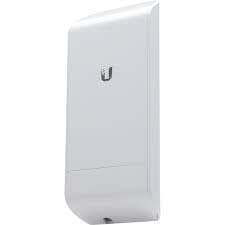Advantages Of Wireless Security Cameras
The main advantage of wireless security cameras is, of course, the ability to mount them away from the NVR. By bridging the gap between the recording device and the camera wirelessly, you can place cameras in positions where other cameras can’t go.
For instance, a span across a car park where a camera would be mounted on a fence opposite the residence. That would be a difficult area to run cable to. It might even required concrete cutting to make a chanel for the cabling. By bridging that gap wirelessly you can now mount cameras anywhere you want.
Within reason. Let’s talk more about that.
Disadvantages Of Wireless Security Cameras
Wireless Cameras Need Power
Wireless cameras still need power. They’re only wireless in the sense that they aren’t wired to the network the NVR is connected to. They still have to be wired to something because they need power.
You can get battery operated cameras, such as Netgear’s Arlo cameras. These run on batteries. The problem is, you need to recharge them frequently. For most people, security cameras are a set-and-forget security feature. Arlo cameras and the like make you responsible for their ongoing running.
Wireless Reliability Problems
The other problem with wireless cameras is reliability. If you’ve ever had problems connecting to your wifi (and that’s pretty much everyone) then you can understand the potential for it to cause problems. Wifi can be perfect for months on end, then suddenly experience annoying dropouts.
Seperate from drop-outs is the issue of bandwidth. The higher the definition of the camera (eg 8mb) the more bandwidth you need. Wireless will not carry as much data as an ethernet cable can. If there are compounding issues with wireless transmissions (eg trees grow up and obscure signal, niehgbours using your same wifi channel, etc) then you can find yourself with the equivalent of buffering issues in your video feed.
Solutions For Wireless Security Cameras
We’ve got two main solutions for you. The first will work for you if you want to join a single camera to an existing system.
Unifi airGateway

The Unifi airGateway is a cheap and reliable device. It can work as an access point (broadcasting) or as a client (receiving). In client mode you connect it to an existing wireless network. This is then connected to the camera via ethernet. The camera is now part of the existing camera network and can record video to the NVR via the wifi link.
We’d use this solution in situations where distances were small and signal strength of the existing wifi was good.
Point-to-point wireless

This is a much more robust solution for wireless networking of security cameras. Point-to-point wireless solutions, such as Unifi NanoStation, can connect to each other kilomters apart. They form a tunnel between each other that is a whole lot more reliable than common wireless broadcasting solutions you might be more familiar with.
A solution like this can span a distance and allow you to connect up multiple cameras. For instance, a NanoStation can connect to a switch, and that switch can then connect to multiple cameras. That NanoStation is connected to the other Nanostation, which then connects everything to the rest of the network.
Once installed, a solution like this will form a reliable part of your network (to which the NVR is attached).
Installing Wireless Security Cameras
If you’re thinking of installing wireless security cameras, talk to us first. We might have a good solution for you that dispenses with the need for wifi. Or we’ll suggest the wireless solution that is best suited to your needs.